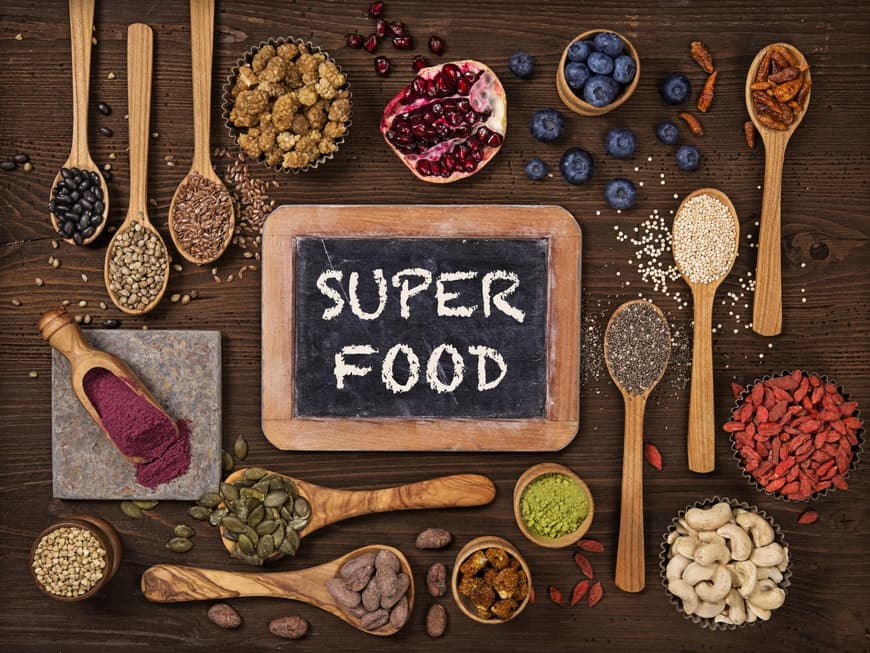
Hemp seed
Origin
India, Iraq, Kazakhstan
Ingredients & effect
Anti-inflammatory and easily digestible proteins, essential fatty acids (omega-3 and -6) for the cardiovascular system. Vitamin B1 and B2 for the nerves. Also calcium, potassium, magnesium and iron. The intoxicating substances have been completely bred out.
Use
Stirred into yogurt or muesli or sprinkled over salads and soups as a topping. It is also delicious in bread, rolls, cakes or baked into pancake batter.
Kale
Origin
Central and southern Europe
Ingredients & effects
Cell-protecting vitamin E, immune-boosting vitamin C, vitamin A for the eyes and skin and calcium for the bones. It provides veggies with important proteins.
How to use
After thoroughly washing and removing the stalks, use raw for smoothies, drinks, bowls and salads. Ideal baked as crispy potato chips, cooked for soups, stews, stewed and pasta dishes and cabbage rolls.
Millet
Origin: Mongolia
Mongolia, Afghanistan
Ingredients & effects
Iron for the blood, magnesium and silicon to strengthen bones, joints, skin and hair. Vitamin E and many B vitamins for the metabolism. Gluten-free.
Use
Cooked like rice as a side dish or risotto. As flakes or pearl barley for grits and porridge. Also good for patties or dumplings. Can be prepared sweet in milk or savory in broth. However, millet is not suitable for baking due to its lack of gluten.
Sweet lupins
Origin
Southern Europe, North Africa, Middle East
Ingredients & effect
Gluten-free and genetically unmodified legume with a high protein content. Rich in anti-cancer and anti-inflammatory flavonoids, vitamin E, calcium, potassium, magnesium and iron.
Use
Like tofu for meat substitutes and as a vegan milk alternative. Flour and meal made from sweet lupins are great for baking and as a binding agent. Seeds like beans as a vegetable.
Linseed
Origin
Unknown, possibly Central Asia (Mongolia)
Ingredients & effect
Good filling fiber, digestive swelling agents and mucilage. Essential lecithin, proteins and valuable omega-3 fatty acids for the metabolism. Vitamin E for the cholesterol level. B vitamins for the nerves.
Use
Always eat with plenty of liquid so that it can swell and develop its full effect, e.g. in soups, mueslis, drinks and smoothies.
Matcha tea
Origin
Via China to Japan
Ingredients & effect
Caffeine to increase concentration and performance. Theanine (amino acid) for the nerves and as possible protection against Alzheimer's and Parkinson's disease. Tannins for the stomach and intestines. Catechins as cell protectors.
Uses
Classically as a tea, with milk also as a latte. For smoothies, cocktails, mueslis and breakfast bowls. For baking in cakes, cookies and macarons. For ice cream, creamy desserts and even savory dips.
Goji berries
Origin
China
Ingredients & effect
Essential amino and fatty acids plus rare trace elements. Contain more immune-boosting vitamin C than oranges, antioxidant vitamin A and muscle-building minerals (zinc, copper, iron, phosphorus).
Uses
Like raisins in cakes and pastries, muesli, smoothies, desserts and salads or in hearty stews with lamb, beef and poultry. It is best to soak in water for 3-4 minutes before preparation.
Coconut oil
Origin: Indonesia
Indonesia, Sri Lanka
Ingredients & effect
Antiviral and antibacterial lauric acid to support the immune system. Medium-chain fatty acids as a metabolic turbo. Essential trace elements such as zinc, manganese, copper and iron.
Use
As a highly heatable frying and deep-frying fat. For refining smoothies, shakes, creamy soups and sauces. For homemade muesli bars or instead of butter or margarine for vegan baking recipes.
